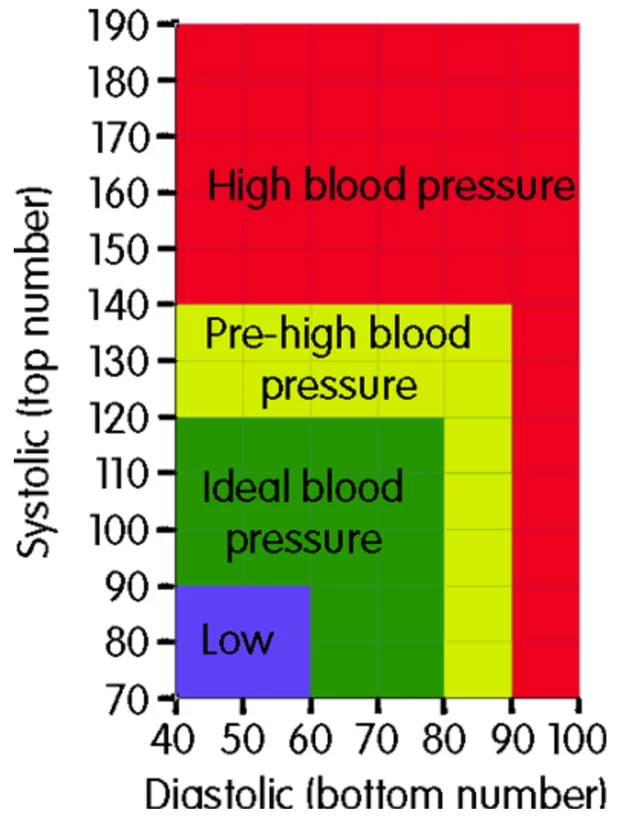Everything you need to know about blood pressure – Know your numbers
What is blood pressure?
Blood pressure is a measure of force that the heart uses to pump blood around your body. You will be given two numbers, the first is the ‘systolic pressure’ when your heart pushes blood out, and the ‘diastolic pressure’ when your heart rests between beats.
Blood pressure is normally written like this 120/80mm/Hg
What is a normal blood pressure?
If your blood pressure is above 140/90mmHg, then you may have high blood pressure. This is the point at which your risk of health problems increases. You may be prescribed medication or advised to make changes to your lifestyle.
120/80mmHg – 140/90mmHg is high than ‘normal’ blood pressure and you should make changes to your lifestyle to try and bring your blood pressure down.
90/60mmHG – 120/80mmHg is the ideal blood pressure
90/60mmHg or lower would be considered low blood pressure, it could make you feel a little dizzy, but it could be a sign of another health problem and it’s worth seeing your doctor.
How can I get my blood pressure checked?
You can get your blood pressure checked at your GP surgery, however, there are many other places where it is readily available such as pharmacies, gyms, NHS health checks, the workplace, or at wellbeing events.
You can also buy a machine to check your blood pressure at home. Your local pharmacy will be able to advise on a suitable machine.
Why should I get my blood pressure checked?
Over a period of time having consistently high blood pressure can lead to serious health problems such as:
- Stroke
- Heart disease
- Kidney disease
- Vascular dementia
- And many more
By taking simple steps early to reduce blood pressure, you can prevent health problems.
How can I lower or maintain a healthy blood pressure?
There are several steps you can take to lower your blood pressure or keep it in a healthy range:
- Keep active, taking regular exercise such as regular walks. You don’t have to start running marathons to keep active.
- Stop smoking
- Eat a healthy diet, eat your five a-day fruit and vegetable portions and lower your salt intake
- Reduce your alcohol intake
- Lose weight as being overweight can raise your blood pressure
- Try and reduce your stress and get a good night’s sleep.
If your blood pressure is raised your doctor may prescribe medication to bring it down. If you are concerned that you have high blood pressure, please make an appointment to see your GP. It is really important to get it checked.
Know your numbers awareness week is a national campaign that takes place in the UK every September. Why not consider having your own event in your workplace?
Blood Pressure Chart for Adults

Using this blood pressure chart: To determine what your blood pressure readings mean, just find your top number (systolic) on the left side of the blood pressure chart and read across, and your bottom number (diastolic) on the bottom of the blood pressure chart. Where the two meet is your blood pressure.
What blood pressure readings mean
As you can see from the blood pressure chart, only one of the numbers has to be higher or lower than it should be to count as either high blood pressure or low blood pressure:
- 90 over 60 (90/60) or less: You may have low blood pressure.
- More than 90 over 60 (90/60) and less than 120 over 80 (120/80): Your blood pressure reading is ideal and healthy.
- More than 120 over 80 and less than 140 over 90 (120/80 – 140/90): You have a normal blood pressure reading but it is a little higher than it should be, and you should try to lower it.
- 140 over 90 (140/90) or higher (over a number of weeks): You may have high blood pressure (hypertension). You should see your doctor and investigate further.
So:
- If your top number is 140 or more – then you may have high blood pressure, regardless of your bottom number.
- If your bottom number is 90 or more – then you may have high blood pressure, regardless of your top number.
- If your top number is 90 or less – then you may have low blood pressure, regardless of your bottom number.
- If your bottom number is 60 or less – then you may have low blood pressure, regardless of your top number.




